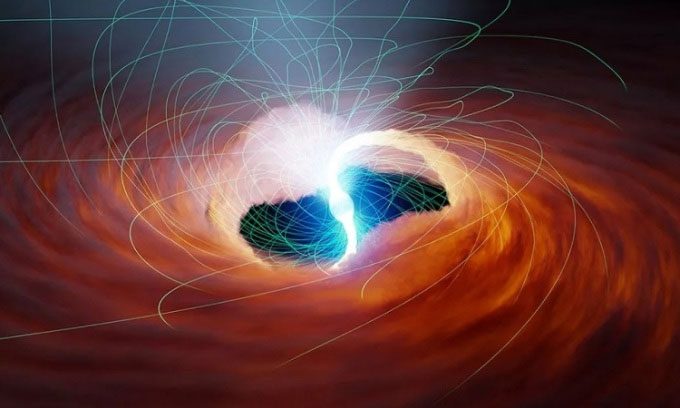A star emitting X-rays located in the Messier 82 galaxy, approximately 12 million light-years away from Earth, shines so brightly that it breaks the laws of physics.

Simulation of a super-bright neutron star with an extreme magnetic field. (Photo: NASA/JPL-Caltech).
Astronomers refer to such a law-breaking object as an ultraluminous X-ray source (ULX), which emits energy 10 million times greater than that of the Sun. This energy level surpasses the physical law known as the Eddington limit (estimated to be about 150 times the mass of the Sun, according to Nature), which states that the brightness of an object is limited by its size. If an object exceeds the Eddington limit, researchers predict it would explode into many pieces. However, ULXs often exceed this limit by 100 to 500 times, leaving scientists puzzled, according to NASA.
Recent observations published in the Astrophysical Journal from the NASA Nuclear Spectroscopic Telescope Array (NuSTAR), which specializes in examining the universe using high-energy X-rays, confirmed the existence of a particularly bright ULX named M82 X-2. Previous hypotheses suggested that this extreme brightness could be an optical illusion, but the research results proved this hypothesis incorrect; M82 X-2 indeed challenges the Eddington limit, as reported by Live Science on April 11.
Astronomers had previously thought that ULXs could be black holes, but M82 X-2 is a neutron star. Neutron stars are the remaining cores of dead stars similar to the Sun. They are so dense that the gravitational force on their surface is 100 trillion times stronger than that on Earth, meaning any matter drawn to the surface of the dead star experiences explosive effects. For instance, a marshmallow dropped onto the surface of a neutron star would collide with energy equivalent to 1,000 hydrogen bombs.
The new study found that M82 X-2 consumes material at a rate of about 1.5 Earth masses per year from a neighboring star. As this material impacts the star’s surface, the resulting force generates the brightness observed by the research team. They believe this is evidence that something allows M82 X-2 to surpass the Eddington limit. Their current hypothesis is that the intense magnetic field of the neutron star alters atomic shapes, enabling the star to maintain its form even as it becomes increasingly bright.
“These observations allow us to understand the effects of extreme magnetic fields that we could never simulate on Earth with current technology,” said Matteo Bachetti, the lead researcher and astrophysicist at the Cagliari Observatory in Italy.


















































